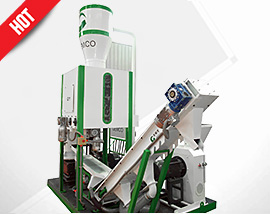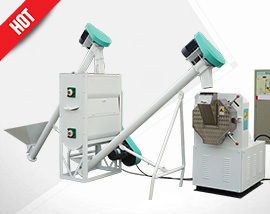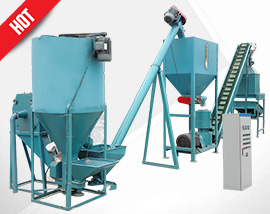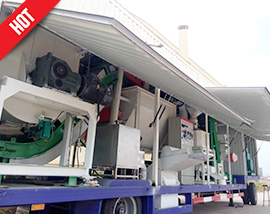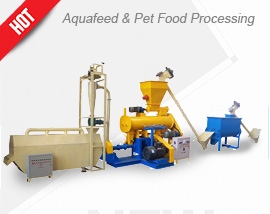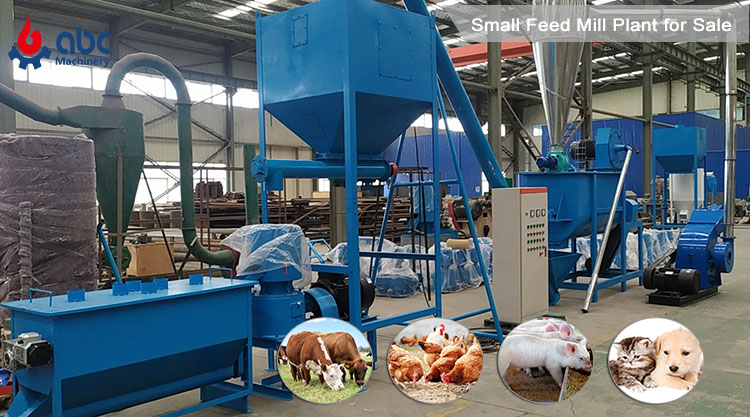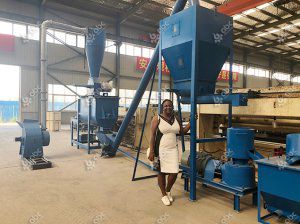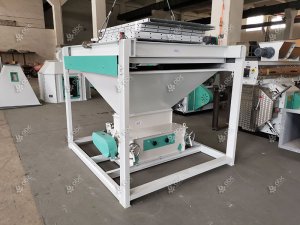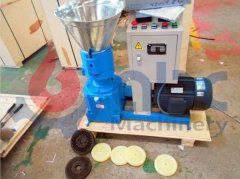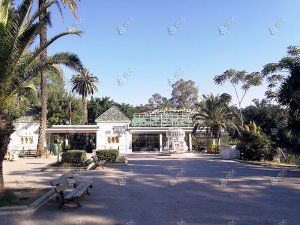2 ton/h Animal Feed Processing Machine Line
Project Name: Animal Feed Processing Line
Feed Plant Capacity: 2 ton/hour (2 tons feed pellets can be produced per hour)
Application: This feed production line is suitable to process feed pellets for grazing herbivore and ruminate animals such as sheep and cattle.
Feed Processing Project with larger Capacity: 5 ton/h Cattle Feed Pellet Plant
Animal Feed Processing Machine Details
Looking for a complete set of animal feed processing machine for making medium scale cattle feed? Maybe this production line is what you want. This project includes the process of crushing, mixing, pelletizing, cooling and packaging. It adopts ring die feed pellet mill which is cost effective for small to medium scale production line.
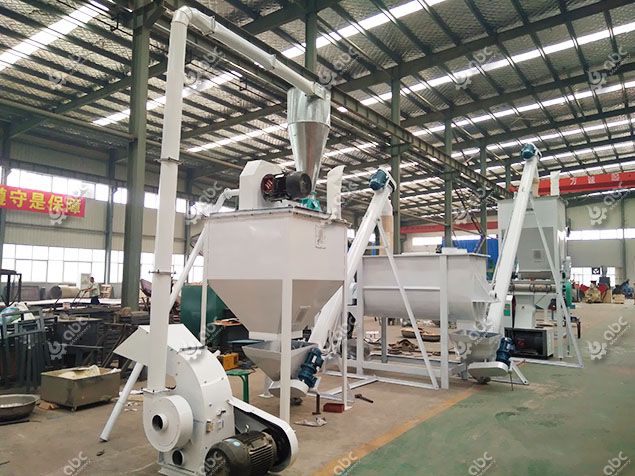
Animal Feed Processing Machine Included
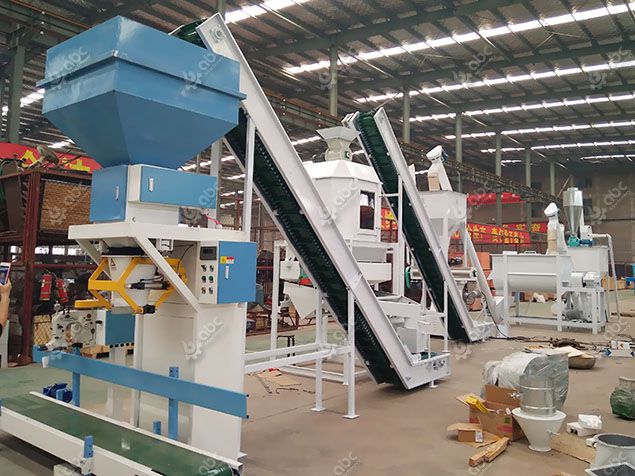
Feed Packaging Equipment
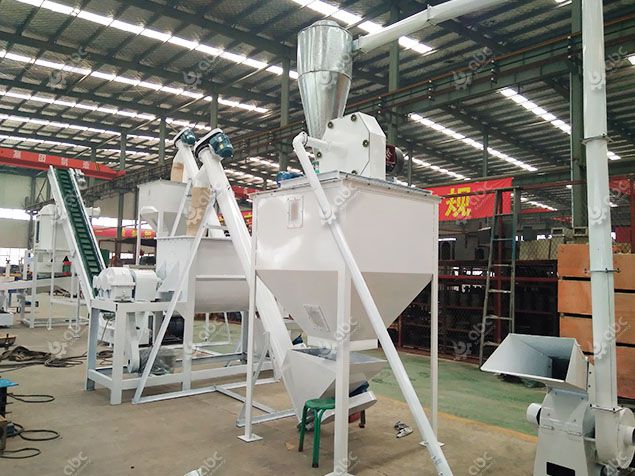
Pretreatment Equipment
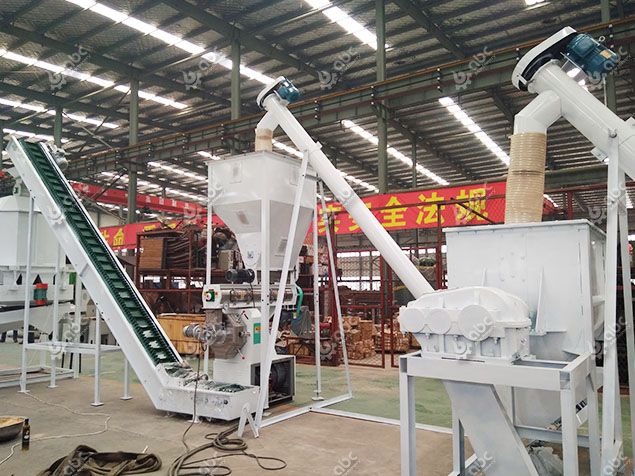
Pelletizing Section
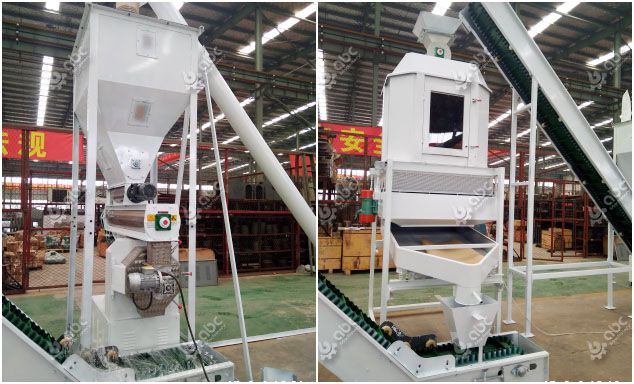
Feed Pellet Mill and Pellets Cooling Machine
Livestock Animal Feed Production
The reasons for raising livestock such as cows, sheep, rabbit, camel, and pigs are many. Some raise them for meat, milk, eggs, leather, wool, and fur or fertilizer for their farmland, while others raise them for business. In any way, these animals are special, and to succeed in their farming, you must know how to manage livestock feed wisely. The success of livestock farming depends on good care and proper feed management.
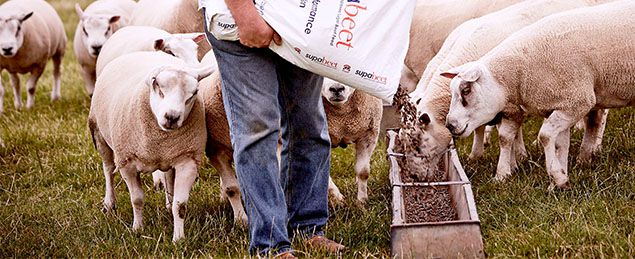
Application of Feed Pellets
To make the best milk and good meet out of your livestock, you need to provide your livestock with a varied and balanced diet which includes proteins, vitamins, energy, mineral salts, quality concentrations and a lot of clean water. There are also available supplements that can improve the quality and quantity of milk.
Livestock Feed classification
In general, livestock feed can be classified into four main categories: Pure forage feed, complete feed, concentrated and premix feed. For quality meat, milk, eggs, leather, or profitable business, the following guide will help every farmer to on livestock feed processing in a proper way.
Pure Forage Feed

Also known as grass feed pellet, pure forage is made from hay, grass, grain straw, stalk, alfalfa, and etcetera. Fresh fodders made using Lucerne, Napier grass and sweet potato vines contain a lot of water that is important to your livestock. It is not advisable to feed cut grass to your livestock. You need to cut fresh grass and leave to wilt, then chop into smaller pieces usually two inches to make it easier for your livestock to eat and to avoid wastage of feed. A milk cow should be fed 15 to 20 kg of chopped forage daily preferably in the morning and evening. This is considered the easiest way for making livestock feed pellets. (New Product: Movable Mini Grass Feed Milling Plant for Cattle and Sheep )
Complete Feed

Complete Formula Feed Pellets
Complete formula feed can be directly used for feeding, and it can fully meet the daily nutritional needs of livestock animals, only water is needed extraly.
This kind provides a diet that contains all the nutrients required for the growth of your livestock. It does not include forage, hay, and pasture. It is divided into four major parts based on the type of nutrient it provides to the livestock. If you are planning to start commercial animal feed processing business, you might be interested in our complete animal feed pellet line.
Complete feed is generally composed of:
- Energy Feed which includes wheat, corn, bran, etc.
- Protein Feed like bean and its oil, fish meal and etcetera.
- Coarse Feed such as corn stalk, pasture, wheat straw, vinasse, etc. and
- Additives which include microelements, salt, bone powder, vitamins, mineral salts, etc.
Concentrated Feed
This classification comes in a complicated variety of different ingredients, forms and descriptions and each with its own benefits. It is composed of protein feed, mineral feed, energy feed and some additives. It is mostly fed to herbivores like sheep, cattle, and cows and rabbits because it is based on green fodder, coarse feed, and silage. That is why it is also known as mixed concentrate feed. This type of feed is not in complete nutrition and it is only fed to as a supplementation of nutrient that lacks to your livestock by eating silage feed pellets and forage grass.
Concentered feed pellets are very important in that they provide great sources of nutrients which come in high concentrations to supplement forages. They also supply quality sugar, protein, and starch that are good for ruminant digestion. In addition, they offer a wide selection of many nutrients that complete a balanced diet for your livestock. Maybe you are interested in establishing a mash feed production line.
Premix Feed
Premix feed is a mixture of feed supplements, diluents, vitamins, trace minerals, and medications. It is an added solution for livestock feed with sustainable quality and safety. In addition, it consists of feed that are mainly composed of food additives which have three main kinds:
- Nutritive Additives which includes vitamins, trace elements, and amino acids.
- Drug Additives which helps in length improvement and prevention of disease-causing organisms.
- General Additives such as incense enhancer and mildew and etcetera.
Premix feed pellets are only produced by feed pellet factories which produce high-quality premix.



